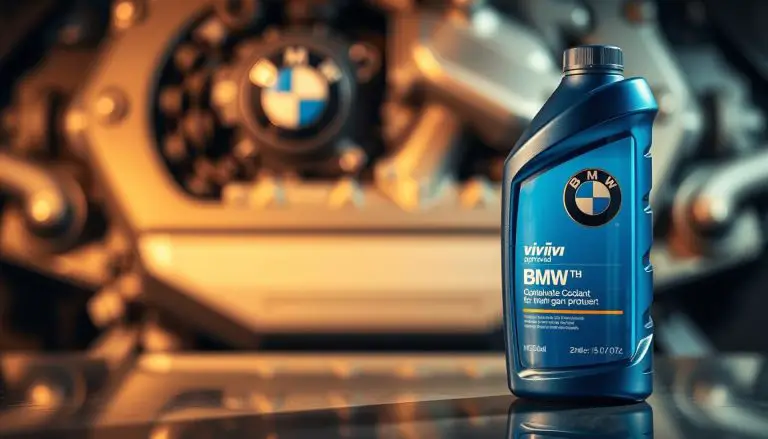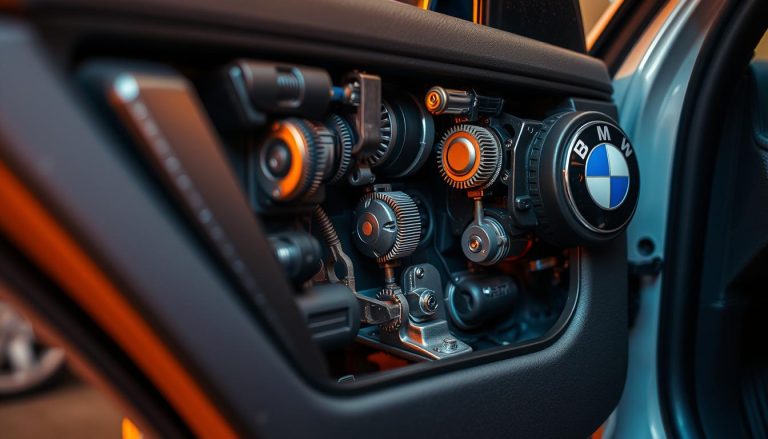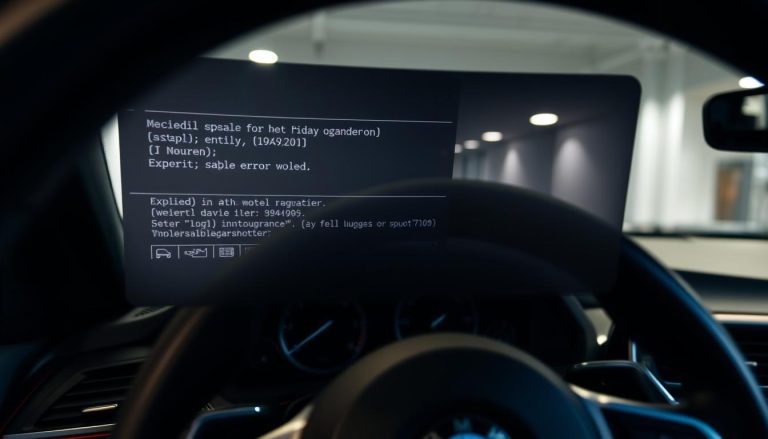A coolant leak in your vehicle poses a significant risk of severe engine damage if not promptly addressed. It is imperative for BMW owners to be able to identify the signs of a coolant leak and understand the necessary steps for repair.
Common symptoms include a low coolant level, engine overheating, and visible signs of leakage under the car. If you suspect a leak, it is crucial to identify the source, which could be the radiator, water pump, hoses, or head gasket. For a detailed guide on diagnosing a coolant leak, you can refer to this resource on diagnosing a coolant leak in your.
Prompt action is necessary to prevent costly repairs, such as replacing a water pump or head gasket, which can cost upwards of $1,100 and $3,400, respectively.
Key Takeaways
- Recognize the symptoms of a coolant leak, such as low coolant level and engine overheating.
- Identify potential sources of the leak, including the radiator and water pump.
- Understand the importance of prompt repair to avoid costly engine damage.
- Learn how to diagnose a coolant leak using methods like UV dye detection kits.
- Take immediate action to repair or replace the leaking component and refill coolant.
Understanding BMW Cooling Systems
The intricacies of BMW’s cooling system are paramount for preserving the vehicle’s performance and longevity. This system, a complex network of components, is designed to regulate engine temperature effectively.
How BMW Cooling Systems Work
The BMW cooling system functions by circulating coolant through the engine, absorbing heat, and then dissipating it through the radiator. This intricate process involves several critical components, including the water pump, radiator, hoses, and thermostat. The water pump circulates the coolant, while the thermostat controls the engine’s operating temperature.

Types of Coolant Used in BMW Vehicles
BMW vehicles necessitate specific coolants for compatibility and optimal performance. Ethylene glycol-based and propylene glycol-based coolants are the most commonly recommended. It’s crucial to use the correct type of coolant as specified in the vehicle’s manual to prevent damage to the cooling system.
“Using the wrong coolant can lead to corrosion and damage to the engine,” as noted in BMW’s maintenance guidelines. Thus, it is imperative to adhere to the manufacturer’s recommendations.
Common Causes of BMW Coolant Leaks
Coolant leaks in BMW vehicles stem from a multitude of factors, spanning from the degradation of hoses to intricate engine malfunctions. Grasping these causes is imperative for the effective diagnosis and rectification of leaks.
Deteriorated Hoses and Connections
The deterioration of hoses and connections within the cooling system is a prevalent cause of coolant leaks. Over time, these components may become brittle, crack, or corrode, resulting in leaks. Proactive inspection of these components can preemptively identify potential issues, averting more severe complications.

Faulty Water Pump Issues
A malfunctioning water pump is another critical contributor to coolant leaks. The water pump’s role in circulating coolant through the engine is paramount. Failure or damage to the pump can precipitate leaks. Indicators of a failing water pump include signs of rust, corrosion, or coolant leakage surrounding the pump. For a comprehensive guide on diagnosing coolant leaks, refer to this resource.
Radiator and Expansion Tank Problems
Problems with the radiator and expansion tank can also induce coolant leaks. Damage to these components, such as cracks or corrosion, can facilitate coolant escape. Regular maintenance, encompassing inspections for damage, is crucial in preventing leaks.
Head Gasket and Engine Block Cracks
More severe coolant leaks can arise from head gasket failures or engine block cracks. These issues are more complex to diagnose and repair, often necessitating professional intervention. Symptoms may include coolant leakage into the engine oil or a significant coolant level drop without an apparent external leak.
| Cause | Symptoms | Repair Difficulty |
|---|---|---|
| Deteriorated Hoses | Visible leaks, coolant on ground | Easy |
| Faulty Water Pump | Leaks around pump, engine overheating | Moderate |
| Radiator/Expansion Tank Issues | Visible damage, coolant leakage | Moderate |
| Head Gasket/Engine Block Cracks | Coolant in oil, significant coolant loss | Hard |
Recognizing BMW Coolant Leak Symptoms
Identifying coolant leak symptoms is paramount for BMW maintenance. Such leaks can precipitate severe engine malfunctions if not swiftly addressed. Acquaintance with these symptoms empowers proactive measures, averting the necessity for expensive repairs.
Visual Indicators of Leakage
The most evident coolant leak indicator is the presence of green or yellow fluid beneath your BMW. The vibrant hue of coolant facilitates its detection. Observations of drips or puddles near the radiator, hoses, or beneath the vehicle are also indicative. Regular inspections of these locales can facilitate early leak detection.
Engine Performance Changes
A coolant leak can induce engine overheating, manifesting as performance degradation. You may observe the temperature gauge ascending or the engine experiencing stuttering. In extreme scenarios, such overheating can necessitate costly repairs or even engine failure.
Dashboard Warning Lights and Messages
Contemporary BMWs feature advanced warning systems. A coolant leak can trigger dashboard alerts, signaling low coolant levels, engine overheating, or other anomalies. It is imperative to respond to these warnings expeditiously to mitigate further damage.
| Symptom | Description | Action |
|---|---|---|
| Visible Coolant | Green or yellow fluid under the vehicle or around the radiator | Check hoses and connections for leaks |
| Engine Overheating | Temperature gauge rising or engine stuttering | Stop the vehicle and check coolant levels |
| Dashboard Warnings | Low coolant level or engine overheating warnings | Refer to the owner’s manual and inspect the cooling system |
Diagnosing the Source of Coolant Leaks
The process of coolant leak diagnosis necessitates a multifaceted approach, encompassing both visual inspections and pressure testing. To pinpoint the exact origin of the leak, a systematic methodology is imperative.
Pressure Testing the Cooling System
Pressure testing emerges as a pivotal technique for pinpointing coolant leaks. By pressurizing the cooling system, one can uncover leaks that remain imperceptible under standard conditions. This procedure entails the utilization of a pressure tester to replicate the cooling system’s operational pressure. Adherence to the manufacturer’s guidelines is paramount to ensure both safety and precision during this process.
The protocol for pressure testing typically encompasses:
- Removing the radiator cap and attaching the pressure tester
- Pumping the tester to the recommended pressure
- Inspecting the system for signs of leakage
Common Leak Points in BMW Models
Specific BMW models exhibit a predisposition to coolant leak issues, stemming from their design and engineering. Leaks frequently manifest in the water pump, radiator hoses, and the head gasket. For example, BMWs equipped with N52 engines often encounter problems with the plastic water pump failing prematurely.
Examination of these typical leak-prone areas facilitates more expedient diagnosis. It is noteworthy that some leaks may exhibit intermittent behavior or only manifest under specific engine conditions, such as extreme temperatures.
Step-by-Step BMW Coolant Leak Repair Guide
The repair of a coolant leak necessitates a series of critical steps, imperative for BMW owners to comprehend. This exhaustive guide delineates the requisite procedures to rectify the leak, thus ensuring the vehicle’s cooling system operates optimally.
Tools and Materials Needed
Initiating the repair necessitates the compilation of essential tools and materials. This ensemble may encompass a socket set, a coolant leak test kit, requisite hoses or gaskets, and the appropriate coolant for your BMW model. Preparation with all necessary items facilitates a more streamlined repair process.
Safety Precautions When Working with Coolant
Engagement with coolant mandates adherence to specific safety protocols. It is imperative to don protective gloves and eyewear, and to ensure the workspace’s ventilation. Given coolant’s toxicity, its handling must be meticulous, with proper disposal of any excess.
DIY vs. Professional Repair Considerations
The decision to undertake the repair independently or to seek professional assistance hinges on one’s mechanical acumen and the leak’s complexity. While certain repairs may present as straightforward, others might necessitate specialized tools and expertise.
Repair Cost Estimates
The financial outlay for coolant leak repair varies significantly, influenced by the leak’s origin and the requisite parts. Costs can span from a few hundred to several thousand dollars, underscoring the importance of a professional evaluation when uncertainty prevails.
When to Seek Professional Help
In cases of substantial leaks or when self-diagnosis and repair seem daunting, professional intervention by a certified BMW mechanic is advisable. Such experts can deliver an accurate diagnosis and execute the necessary repairs with efficiency.
Repairing or Replacing Damaged Components
Upon identification of the leak’s source, the affected component(s) must undergo repair or replacement. This may entail the substitution of hoses, gaskets, or even the water pump or radiator if they are compromised. It is crucial to verify the compatibility of replacement parts with your BMW model.
Refilling and Bleeding the BMW Cooling System
Post-repair, the cooling system necessitates replenishment with the correct coolant type and quantity. Concurrently, the system must be bled to eradicate air pockets, which could precipitate further complications.
Testing Your Repair
The final step involves testing the repair by operating the engine and scrutinizing for any leakage indicators. Monitoring the temperature gauge and coolant level is essential to confirm the system’s functionality.
Conclusion: Preventing Future BMW Coolant Leaks
To avert future BMW coolant leaks, a regimen of regular maintenance and inspections is imperative. An understanding of the prevalent causes and symptoms of such leaks empowers BMW proprietors to proactively circumvent the financial burdens associated with costly repairs.
Inspection of the cooling system, encompassing hoses, connections, and the water pump, is crucial. It facilitates the identification of potential issues before they escalate into significant problems. Concurrently, monitoring the coolant level and its condition is vital to prevent engine damage and other component malfunctions.
Adherence to the maintenance schedule stipulated in the owner’s manual is critical. This entails the timely replacement of coolant and the inspection of the cooling system for signs of wear or damage. Such diligence is essential to minimize the risk of BMW coolant leaks.
Through a proactive maintenance approach, BMW owners can effectively prevent coolant leaks. This ensures their vehicle operates with optimal efficiency and performance.
FAQ
What are the common signs of a coolant leak in my BMW?
Indicators of a coolant leak include the presence of green or yellow fluid beneath your vehicle, an engine that overheats, and dashboard alerts signaling low coolant levels or elevated engine temperatures.
How do I diagnose a coolant leak in my BMW?
To diagnose a coolant leak, one must inspect the cooling system for signs of leakage, conduct pressure tests, and scrutinize common leak points such as the radiator, hoses, and water pump.
Can I drive my BMW with a coolant leak?
No, operating a vehicle with a coolant leak poses a significant risk of engine damage due to overheating. Immediate attention to the issue is imperative to avert expensive repairs.
What type of coolant should I use in my BMW?
BMW advocates for the use of a coolant that adheres to their specifications. Typically, a 50/50 blend of water and a high-quality, phosphate-free antifreeze is recommended.
How do I repair a coolant leak in my BMW?
To rectify a coolant leak, one must first identify the leak’s source, then replace or repair any damaged components. Subsequently, the cooling system must be refilled and bled. If uncertain, seeking the expertise of a professional mechanic is advisable.
How much does it cost to repair a coolant leak in a BMW?
The expense of repair is contingent upon the leak’s origin, the required repair, and labor costs. Generally, costs can range from a few hundred to several thousand dollars.
Can I prevent future coolant leaks in my BMW?
Yes, proactive measures such as regular maintenance, inspections, and timely resolution of issues can prevent future coolant leaks. Utilizing the correct coolant and adhering to the recommended maintenance schedule are also crucial.
What are the consequences of neglecting a coolant leak in my BMW?
Ignoring a coolant leak can result in severe engine damage, including overheating, head gasket failure, and substantial repair costs. In extreme cases, it may necessitate engine replacement.


